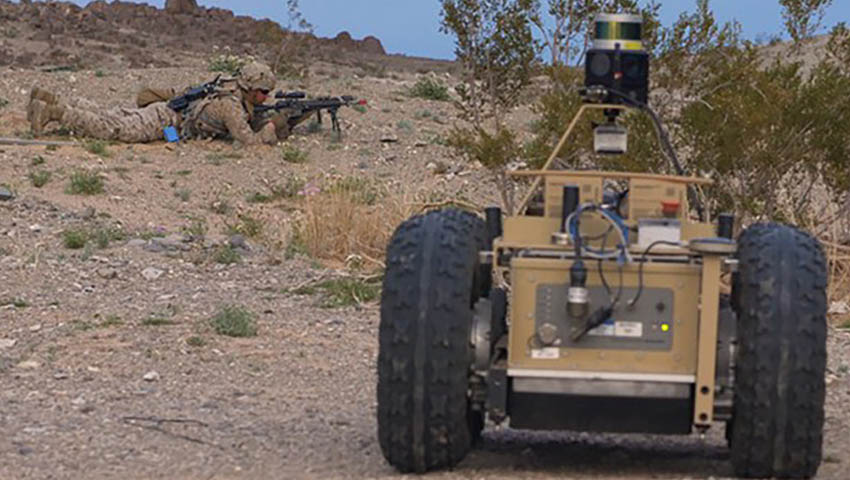Lockheed Martin has awarded BAE Systems a contract to provide key autonomy and artificial intelligence capabilities in support of DARPA’s Squad X program to enhance the collaborative capabilities between infantry and tactical robotic air and ground vehicles.
To continue reading the rest of this article, please log in.
Create free account to get unlimited news articles and more!
Squad X prime contractor Lockheed Martin has awarded BAE Systems a contract to provide key autonomy and artificial intelligence capabilities that aim to advance the effectiveness of tactical robotic air and ground vehicles and create true partnerships between ground warfighters – Soldiers and Marines – and machines at the small-unit level.
The goal of DARPA’s Squad X, which is composed of the complementary Squad X Experimentation and (the now completed) Squad X Core Technologies programs, is to design, develop, and validate autonomous system prototypes and equip them with novel sensing tools and off-the-shelf technologies.
The technologies aim to increase squads’ situational awareness, while the autonomous systems allow squads to increase their battlespace and area of influence. BAE Systems’ FAST Labs research and development organisation will provide Mission Intelligence for Tactical Systems (MITS) advanced sensor fusion, artificial intelligence, and autonomy.
MITS is highly automated and directs mobile robots and their sensor payloads while reducing the cognitive load on its partner warfighters.
Chris Eisenbies, product line director of the autonomy, controls, and estimation group at BAE Systems, said, “Autonomy technology – be it in the air, space, sea, or ground domain – is all about making better decisions faster to allow our warfighters to more effectively execute their missions as safely as possible.”
MITS fuses sensor data, constructs and shares battlefield awareness with its human squadmates, and provides tactical electronic and kinetic support to the squad as it manoeuvres and engages enemy positions.
“We look forward to the prospects of providing this advantage to those in the field,” Eisenbies added.
MITS-synthesised awareness informs human decision making in complex, time-critical combat situations, and directs continuous autonomous robotic tasking.
The $3.5 million Squad X award builds on BAE Systems’ autonomy portfolio and 20-year history pioneering autonomy technology. Work on the Squad X program is being performed at the company’s facilities in Burlington, Massachusetts, and Arlington, Virginia.
This program builds on the autonomous vehicle experience BAE Systems Australia has demonstrated, with the unveiling of two fully autonomous M113 armoured vehicles from the Australian Army in late 2019.
In a six-month project, engineers and technicians installed hardware and software in the vehicles enabling them to operate autonomously. The innovative autonomous technologies being explored could remove soldiers from future battlefields and enable a range of other applications including intelligence gathering and logistics support.
The onboard systems have been designed to comply with the rules of engagement, which always require humans in the decision-making loop.
BAE Systems Australia CEO Gabby Costigan welcomed the milestone at the time, saying, "This project highlights our commitment to leading the development of new technologies and collaborating across industry and academia to advance autonomous capabilities.
The BAE Systems autonomous technologies used for this project have already supported Australian and UK autonomy programs such as Taranis, Mantis, Kingfisher UAS demonstrators as well as the multi-all terrain vehicle (MATV) and Digger unmanned ground vehicle (UGV) demonstrators.
With the technologies now integrated into the M113 prototype, the vehicles will now be used by Army to experiment with to better understand the opportunities to employ autonomy on the battlefield as part of its recently released Robotics and Autonomous Systems Strategy.
The vehicles will also be used as test vehicles for technology developed by the Commonwealth’s recently announced Trusted Autonomous Systems Defence Cooperative Research Centre (TAS-DCRC).
The TAS-DCRC was announced by the Australian government in 2017 under the Next Generation Technologies Fund to deliver game-changing autonomous systems that ensure trusted, reliable and effective co-operation between people and machines during military operations.

 Login
Login







